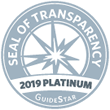The percentage of cancers detected by ultrasound screening increased from 15% in 1999 to 56% in 2008. The proportion of regional thyroid cancers was 48% in 1999 and increased to 59% by 2008; the proportion of localized disease did not change (34% in 1999 and 36% in 2008); and the proportion of distant disease decreased from 5.4% to 1.3%.
The frequency of ultrasound screening detected cancers <1 cm increased from 0.27 per 100,000 people in 1999 to 15 per 100,000 people in 2008. The incidence of clinically detected cancers <1 cm increased from 0.49 per 100,000 people in 1999 to 4.88 per 100,000 people in 2008. The incidence of clinically detected cancers >3 cm did not change, while the incidence of ultrasound screening detected cancers >3 cm increased from 0.17 in 1999 per 100,000 people to 0.61 per 100,000 people in 2008.
Cancers <2 cm accounted for 94.4% of the overall increase in thyroid cancers detected. In general, the frequency of ultrasound screening detected cancer increased 8.4-fold from 1999 to 2008, while the incidence of ultrasound screening detected regional cancer increased 38.2-fold, mostly due to an increase detection of lymph node involvement. A total of 97.1% of the increase in thyroid cancer incidence was due to increased detection of local and regional cancers.
WHAT ARE THE IMPLICATIONS OF THIS STUDY?
The current high incidence of thyroid cancer in South Korea is largely due to increased detection of small local or regional cancers. Given that the vast majority of the increase in South Korea’s rate of thyroid cancer diagnosis consisted of ultrasound screening detected small cancers, this argues in favor of over diagnosis, although the rate of clinically detected cancers did increase by 18.7% over the same period and an increase in true cancer incidence cannot be definitively ruled out.
In general, the vast majority of patients diagnosed with thyroid cancer do very well and relatively few actually die of the disease. Because of this, the main concern about ultrasound screening of asymptomatic patients is that cancer may be identified that may never have grown or cause any problems, thus leading to unnecessary testing and treatment. The updated 2015 American Thyroid Association guidelines recommend against fine needle biopsy of thyroid nodules less than 1 cm in size and suggest consideration of active surveillance rather than surgery for very-low-risk cancers.
— Ronald B. Kuppersmith, MD, FACS

ATA THYROID BROCHURE LINKS
Thyroid Nodules: http://www.thyroid.org/ what-are-thyroid-nodules
Thyroid Surgery: http://thyroid.org/patients/patient_ brochures/surgery.html
Thyroid cancer: http://www.thyroid.org/ cancer-of-the-thyroid-gland




